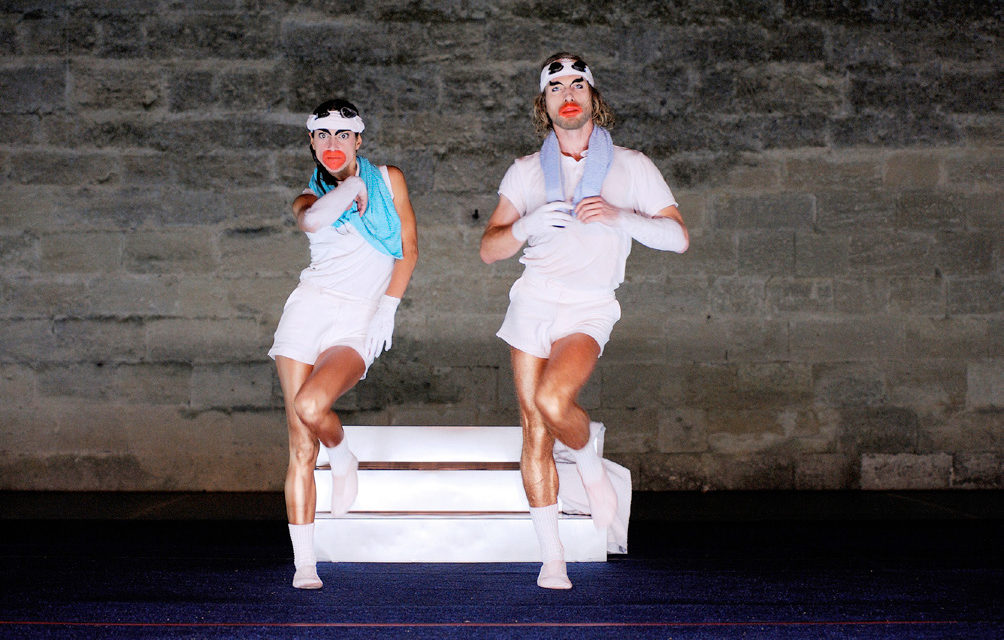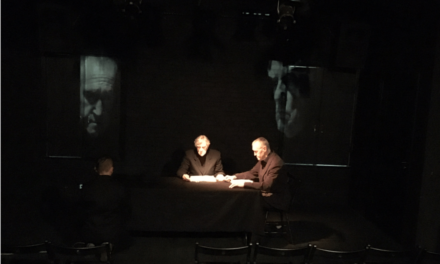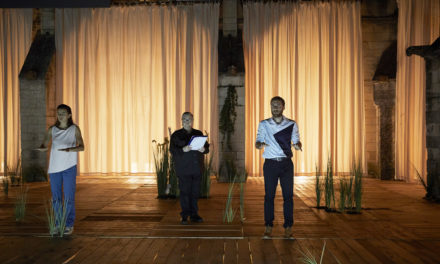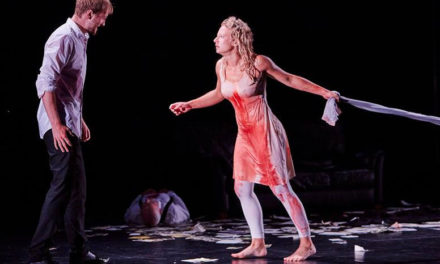Following European trends and funding, there’s been a move towards state and local governments investing in cultural strategies and structures as key lines for regional and territorial development. Some local, historic theatres have been brought back to life while others were built in the first decade of the millennium. Elsewhere, networks such as Rede 5 Sentidos or Artemrede have been formed, all to a backdrop of 120 theatres and a recurring scarcity of means (low programming funds and capacitated agents) aggravated by the crisis years. In a recent report on public financing for cultural and creative activities, the National Statistics Institute (INE) stated that
“…in 2016, according to data collected through the Survey on Public Financing of Cultural, Creative, and Sports Activities, the Local Governments allocated 385.7 million Euros to cultural and creative activities (1.7% lower compared to the previous year), mainly in the following domains: ‘interdisciplinary activities’ (28.8%), ‘performing arts’ (22.8%), ‘cultural heritage’ (20.5%), and ‘libraries and archives’ (17.2%).”
Although this funding is not specific to the performing arts and includes venues, professional and amateur structures and events, numbers point to over €90M invested in performing arts by local governments, with the Lisbon Metropolitan Area leading the way.
A northern epicenter within this trend can be found within the Comédias do Minho (in the Minho region), a performing arts project that works within local communities and is funded by five municipalities. On the southern Alentejo coast, two municipalities also came together to combat the cultural void of the winter season with the program Lavrar o Mar (plowing the sea). The events take place from October to May, with artists Madalena Victorino and Giacomo Scalisi programming residencies and creative work designed to involve the local area and people, as well as presenting key international performing arts work, often from the contemporary circus. Nearer to Lisbon, in collaboration with the municipalities of Cartaxo and Torres Novas, the Festival Materiais Diversos has
“propelled a region contributing to the cultural, social and economic development of its communities.”
Curated by Elisabete Paiva, it has a strong national and international programme and produces associate artists such as Filipa Francisco and Sofia Dias & Vítor Roriz. In the south, near Faro, artists Ana Borralho and João Galante have been building up CasaBranca, a creation structure that hosts the annual Verão Azul festival.
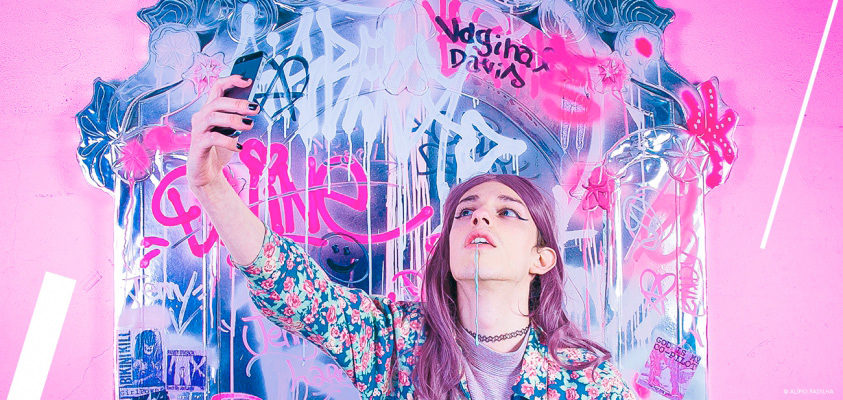
Spring Awakening by Teatro Praga (© Alípio Padilha)
Other exciting locations include Santa Maria da Feira–home to the street arts festival Imaginarius and host of Street Fest–Ílhavo’s new 23 Milhas arts residency program and contemporary circus festival LEME, in the center, and the Azorean Ponta Delgada municipality (on S.Miguel island), with its new Arquipélago Arts Center and charismatic Walk&Talk Festival. The general aim for all of these municipalities–whether they are just emerging or busy strengthening their positions–is to reinforce the cultural decentralization process, support new territorial epicenters and increase both the cultural offering and the democratization of access.
Access Culture, an association which promotes physical, social and intellectual access to cultural programming and venues, recently promoted the creation of “Central Peripheries,” an “informal working group which brings together individuals who are focused on creating artistic work outside of Portugal’s two main urban centers.” The following, however, focuses on the metropolitan areas of Lisbon and Oporto, which are generally the most active municipalities and urban cultural centers in Portugal.
Lisbon
In the city of Lisbon, EGEAC is the municipal company promoting cultural diversity via street festivals and the management of cultural spaces, including theatres, museums, art galleries and monuments such as the São Jorge Castle. It operates under the political tutelage of cultural councilor Catarina Vaz Pinto – founder of the seminal educational structure Forum Dança and recently-elected president of Artemrede – who was invited by the municipality in 2009 by then-mayor and current Prime Minister António Costa and is presided over by Joana Gomes Cardoso.
Until very recently São Luiz and Maria Matos theatres were the main municipal venues for performing arts and were oriented towards public service as well as being programmed by independent artistic directors. With self-governing budgets and strong links to international programming networks, they have played a pivotal role in supporting the independent performing arts scene through the recent years of crisis, commissioning and co-producing a diverse group of both emergent and established Portuguese artists (performers, actors, theatre directors, choreographers, dramaturgs and researchers) and supporting creation, circulation and internationalisation through their national and international networks. Currently, the two theatres have very different future prospects.
Pina Bausch danced Café Muller for the last time in the São Luiz Theatre (SLT), a venue that utilizes its three stages within a multidisciplinary programming philosophy that is anchored in theatre, has a firm
feminist approach in its programming lines and is accessible to several lines of creation. Aida Tavares–one of the few women involved in the artistic direction of one of Portugal’s main venues–took on the baton from Jorge Salavisa (historic CNB and Ballet Gulbenkian’s director) and has been steadily building a curatorial line of her own together with Susana Duarte, who is responsible for youth programming. With a longstanding relationship with Paris’ Theatre de la Ville and co-producing key contemporary artists ranging from Portuguese Praga Theatre to Italian Romeo Castellucci, SLT regularly opens its doors to artists’ “occupations.” A recent example is Project P!, which was curated by performance arts researcher Ana Pais and drew several generations of performance artists in Portugal to the theatre to celebrate the 100th anniversary of Almada Negreiros’ Futurist Conference (a seminal performance held in SLT in 1917).
Maria Matos Theatre (MMT), meanwhile, has taken up a pivotal role in the performing arts scene, positioning itself as a socially and politically-active theatre both locally and internationally under Mark Deputter’s artistic direction (2008-2017). Following his charismatic programming at the Centro Cultural de Belém, along with his main project Alkantara–a key festival and structure that started 25 years ago as Danças na Cidade (founded by Mónica Lapa)–MMT has hosted and co-produced performances and independent artists, companies, and festivals, commissioning thematic events, as well as promoting the presentation of foreign artists, international co-productions and the internationalization of Portuguese creation. Deputter’s vision–together with Liliana Coutinho and Pedro Santos, as well as invited co-commissioners like choreographer Vera Mantero–has focused on political, social and ecological issues through multidisciplinary cycles involving performances, lectures, debates, films, installations, and interventions in the public space.
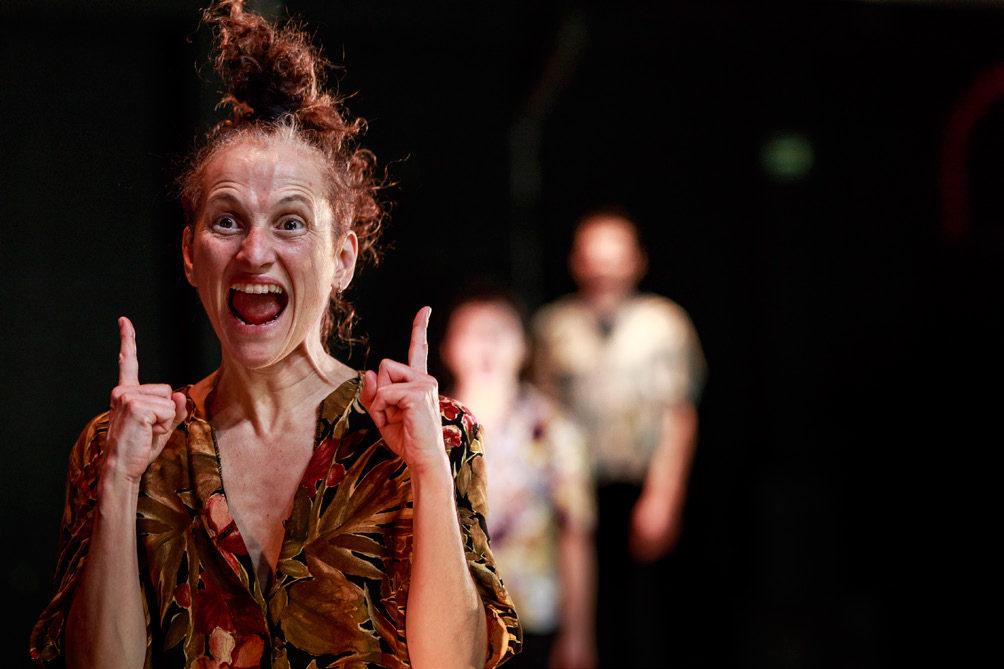
The Clean And The Dirty by Vera Mantero (© TUNA)
The recent transition of Mark Deputter and his curatorial team to Culturgest–a crucial multidisciplinary venue that has been led by the vision of programmers such as António Pinto Ribeiro, Miguel Lobo Antunes, Gil Mendo and Francisco Frazão–following a public concourse, will be felt in the forthcoming 2018/19 season, but has already impacted heavily upon Lisbon’s performing arts landscape. MMT management is being privatized–a decision that has been strongly contested by the sector–and, beyond July 2018, the future of this iconic theatre is unknown. Indeed, the EGEAC instead decided to invest in the Teatro do Bairro Alto, the home venue of historical independent theatre company Cornucópia, led by Luís Miguel Cintra, which folded in 2017 to huge consternation. Its precious space in the heart of Lisbon’s Principe Real is being renovated while a public concourse for its artistic direction is held. This promises a new and open horizon for the city’s performing arts venues, despite being the result of two dramatic blows to the Portuguese arts scene.
The recently-renovated Belém Theatre also offers a crucial new venue for children’s and youth performing arts and is set to open soon under the artistic direction of Susana Menezes, former curator of the Maria Matos Theatre. This is a booming sector led by artists such as Aldara Bizarro, Sílvia Real, Catarina Requeijo and Formiga Atómica, among many talented others.
Rua das Gaivotas 6, meanwhile, Teatro Praga’s new irradiating arts center in downtown Lisbon–a municipal space that is also home to choreographer Marlene Monteiro Freitas’s structure PORK–offers a stage for emergent artists and independent projects, as well as a vital place for debate and research.
Several municipal spaces house historic independent theatre companies such as A Comuna Theatre, Novo Grupo/Teatro Aberto or A Barraca Cinetheatre, as well as Meridional Theatre, A Garagem or Luís Silva’s Karnart. Biennale Artist in the City is a key performing arts city project, offering seminal international creators such as Anne Teresa De Keersmaecker, Tim Etchells, Faustin Linyekula or, in 2018, Christiane Jatahi an invitation to Lisbon to present key pieces and create new ones within the city along with Lisbon’s own artists or/and arts students. It calls for collaboration between municipal and national and public and private city structures, namely Alkantara, which is a crucial partner.
TODOS Festival, meanwhile, is a beacon for municipal social intervention through arts. It rotates every three years from one traditional neighborhood to another, maintaining a high artistic profile while working with the many communities within the city.
Key multidisciplinary venues such as Culturgest, the Gulbenkian Foundation center or the Centro Cultural de Belém are vital to contemporary arts creation, presentation and fruition in Lisbon, but smaller independent venues also play a crucial role. ZDB–Negócio, a small presentation venue programmed by Marta Furtado in the heart of Bairro Alto has proven to be both resilient and pivotal while theatre company venues like João Garcia Miguel’s new Teatro Ibérico or Teatro da Politécnica, home of Jorge Silva Melo’s Artistas Unidos, regularly open their stage for other independent productions despite being centred on their own works.
Artist spaces, which are often shared or rented for symbolic fees, are also crucial to research, rehearsal, and presentation. Emblematic ‘New Portuguese Dance’ performers like Francisco Camacho’s Eira, Clara Andermatt’s studio or the Rumo do Fumo (Vera Mantero and Miguel Pereira) and Forum Dança headquarters offer examples of some such spaces, yet are fragile structures that take a long time to build and can easily disintegrate. This was the case with João Fiadeiro ’s seminal Atelier RE.AL, which folded due to a lack of funding in 2014. Cão Solteiro collective premises, CAL, Primeiros Sintomas, Monica Calle’s Casa Conveniente and Tiago Vieira’s Latoaria also offer key venues for experimental work but are somewhat rough and at risk. Largo Residencias is key to artistic interventions within the community.
Finally, the Alkantara Festival, the Almada Theatre Festival, and Temps d’Images are examples of the important festivals on offer in the town. Cumplicidades, founded by choreographer Francisco Camacho, is a recently-established biennale with renewed programming lines by a cycle of newly-invited curators.
Oporto
Rui Rio, who was mayor of Oporto from 2001 to 2013, is now the leader of the center-right party and a candidate for Prime Minister in the 2019 national elections. His infamous joke quoting Goebbels – “when I hear about culture I run for my calculator” – was a cold shower for the city’s independent performing arts scene following the aspirations and new paths opened up by Oporto European Capital of Culture 2001. Among other unpopular decisions, he rented the historic Rivoli Theatre to a private company, despite huge protests from the artistic community (and others). From 1989 to 2006, Rivoli had been a beacon for contemporary dance under the artistic direction of the late Isabel Alves Costa, founder of FIMP–Oporto Puppet’s International Festival–and artistic director of Comédias do Minho (the open-call Bolsa de Criação Isabel Alves Costa honours her life and work by supporting new independent performing artists). Rivoli became a flagship venue for new mayor Rui Moreira, who was elected in 2013 (and re-elected for 2017-2021), as he set out a strong political cultural program for the city, aided by the driving force that was curator Paulo Cunha e Silva (after Cunha e Silva’s sudden death, Moreira took on direct supervision of the sector dealing with Culture along with Mónica Guerreiro and Guilherme Blanc). The municipality ‘Cultura em Expansão’ program is aiming “to put culture where it belongs, everywhere.” Arts support programs such as Criatório, which funds 16 performing arts projects with a budget of €15,000 each, or Pláka, which has innovated reflection on, and knowledge of, contemporary arts, are instrumental in the Oporto scene, which finds its center in the Porto Municipal Theatre (TMP).
Through its two hubs of Rivoli and Campo Alegre, the theatre presents a multidisciplinary programme open to a wide range of styles and different kinds of audiences, led by artistic director Tiago Guedes. A charismatic choreographer, long-time associated artist to João Fiadeiro’s RE.AL and an experienced networker, Guedes is the founder of Materiais Diversos Festival and directed two local theatres before he took the seat at TMP in 2014. Four years later, after welcoming enthusiastic audiences, he is now reinforcing his programming lines and mission with national and international co-productions and support to artists and companies working from Oporto though the theatre’s international positioning. The recent Dañsfabrik in Brest had its Portuguese focus curated by Guedes and invited Vera Mantero, Ana Rita Teodoro, Jonathan Saldanha, Claudia Dias and Marco da Silva Ferreira–who Guedes also chose for the Focus Danse to Lyon Biennale and is associated artist of the TMP for the for the biennial–along with actor and theatre director Jorge Andrade from Mala Voadora.
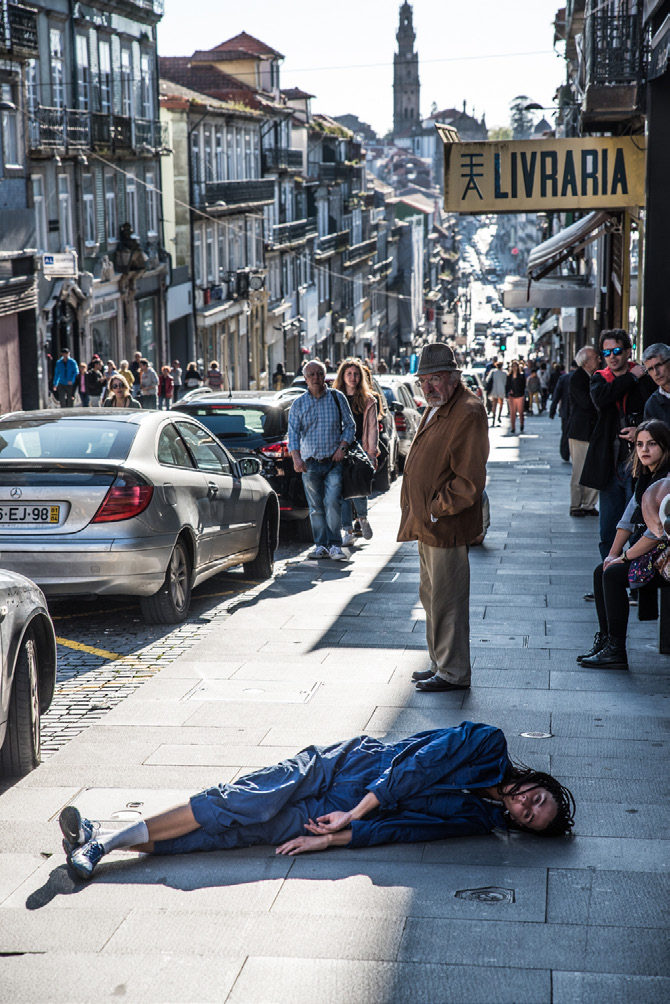
MelTe by Ana Rita Teodoro (© Jose Caldeira)
Elsewhere, the DDD (Days of dance) festival represents an eclectic window into local artists’ work and puts on work from different themes and contexts, with Marco’s urban dance placed alongside Olga Roriz’s dance theatre or the ‘contemporary’ dance of Cristina Planas Leitão. Fundamentally it is an inclusive event that accommodates transmission projects and street occupations and has spread to neighboring towns Matosinhos and Gaia, demonstrating a clear artistic irrigation system.
The Campo Alegre hub is the home of several of the structures that played a pivotal role during the ‘Rio years’ and offers a place for residencies and research. The Instável Company (Companhia Instável), for example, directed by Ana Figueira, opened then-depleted facilities to residencies in 2011, making it a hub for creation and education named Lugar Instável (unstable place). Here, a new generation of performers met and mixed, led by artists such as choreographer Né Barros and Victor Hugo Pontes. They initiated a collaboration between urban and contemporary dance, paving the way for flowing collectives where people can work as creators in their own pieces as well as acting as interpreters, filmmakers or light designers in another–like Marco da Silva Ferreira or Cristina Planas Leitão, who work with Figueira’s pivotal Encontros desNORTE.
Campo Alegre now hosts seven companies and projects, including contemporary circus Erva Daninha and Cátia Pinheiro and José Nunes’ mixed arts projects with Estrutura and TEP–Oporto Experimental Theatre, which puts on politically-involved pieces led by the strong vision of Gonçalo Amorim.
Beyond TPM, venues and companies ranging from the Teatro Nacional de S.João/ TeCa and S.Bento da Vitória Monastery to Joana Providência’s Teatro do Bulhão, Igor Gandra’s Teatro do Ferro, Assédio’s Pocket Room, Circolando (in Cace) and Armazém 22. Mala Voadora also hosts a small yet charismatic programming venue that is often open to guests under a clear programming line.
Finally, the recent closure of Fábrica, a hotbed of independent structures in Oporto, was a blow to a landscape within which Mira Artes is now taking its place as the new spot for debate and performance – hosting a series of debates on feminism proposed by Ana Rocha (ex-Mezzannine’s) and Manuela Matos Monteiro.
This article was originally published by IETM–International network for contemporary performing arts, Brussels in April 2018 as a part of their mappings series. Read the original mapping. It has been republished with permission.
This post was written by the author in their personal capacity.The opinions expressed in this article are the author’s own and do not reflect the view of The Theatre Times, their staff or collaborators.
This post was written by Maria João Guardão.
The views expressed here belong to the author and do not necessarily reflect our views and opinions.

